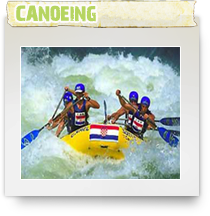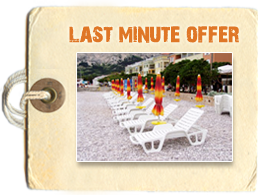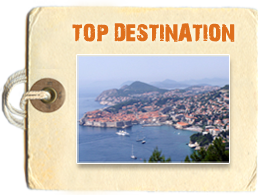
The most beautiful Croatian rivers run through the karstic areas, which means that they abound in limestone barriers and waterfalls, which in turn, due to the abundance of rain and sun, are bordered by lush vegetation. During the dry season the waterfalls retain sufficient water among the limestone barriers to ensure pleasant sailing by canoe, kayak, or indeed for diving. Rivers lose neither their clarity nor their green hue except during the heavy spring and autumn rains. One is hard pressed to find easier to navigate and yet at the same time more interesting rivers to be negotiated by canoe, complemented by magical sites in which to pitch your tent or to do some recreational fishing.
Waterfalls are often inclined to disrupt a journey by canoe, although where detours are necessary they are not particularly onerous or time consuming and provide a rare opportunity to enjoy the wealth of the falls. In summer time one may venture beneath them to discover and investigate impressive caves. The rivers, and their wondrous canyons, are never far from the tourist oriented shores, although their relief and biological characteristics differ greatly from those found along the coastline. Taking advantage of this vicinity, coastal tourist destinations frequently organize one-day excursions to the rivers, and since the guides are experienced rowers one does not need the strength needed for rowing, or experience. Indeed, such a river excursion is suitable for the whole family.
Canoeing on the rivers of Croatia can also provide memorable cultural experiences. The monasteries of Visovac, Holy Archangel and Krupa are located amid the green environs of the Rivers Krka and Krupa, while the Radman Mills [Radmanove mlinice] on the River Cetina represent an interesting entity of popular architecture, as do the mills on the River Krka. Dotted along the rivers, with some frequency, are the remains of old castle, burghs and fortifications. Some of these are well preserved - like Trakošćan Castle, set above the lake of the same name, as well as Ozalj and Dubovac, by the River Kupa. The massive fortress of Knin and the remains of Roman Burnum are also encircled by the Krka, while the ruins of ancient Narona lie close by the River Neretva.
A very special experience are the traditional pilgrimages, and events like the festival of Dalmatian klapas - groups of capella singers - which takes place in Omiš by the River Cetina.
In Croatia the tradition of canoeing is centuries old. Remains of primitive canoes carved out of tree trunks have been found in the Plitvice lakes, and those traditional vessels, trupica, are still frequently used for fishing and transport in the River Neretva’s fertile delta.
Canoeing on most rivers and lakes is subject to certain restrictions in order to ensure protection of plant and animal communities or geological formations. The management teams of protected areas and organizers of commercial trips can provide reliable information, assistance in organizing canoe trips and in acquiring the necessary camping permits.





